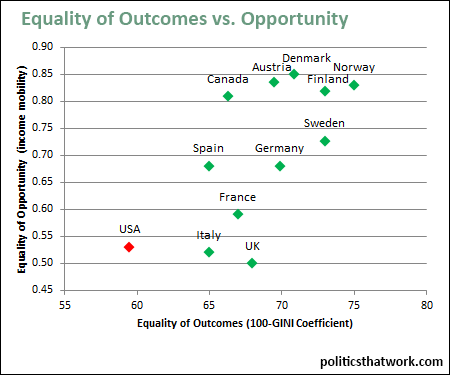
Description: This graph correlates the equality of outcomes in a country with the equality of opportunity. The equality of outcomes are measured by the GINI coefficient, which is inverted here so that higher numbers indicate a more equal society. The equality of opportunity is the level of intergenerational income mobility in a country. Specifically, it is one minus the degree to which people's incomes today are driven by the income of their father.
Sources: OECD World Bank
Data: Excel
Last updated: March 16, 2016





